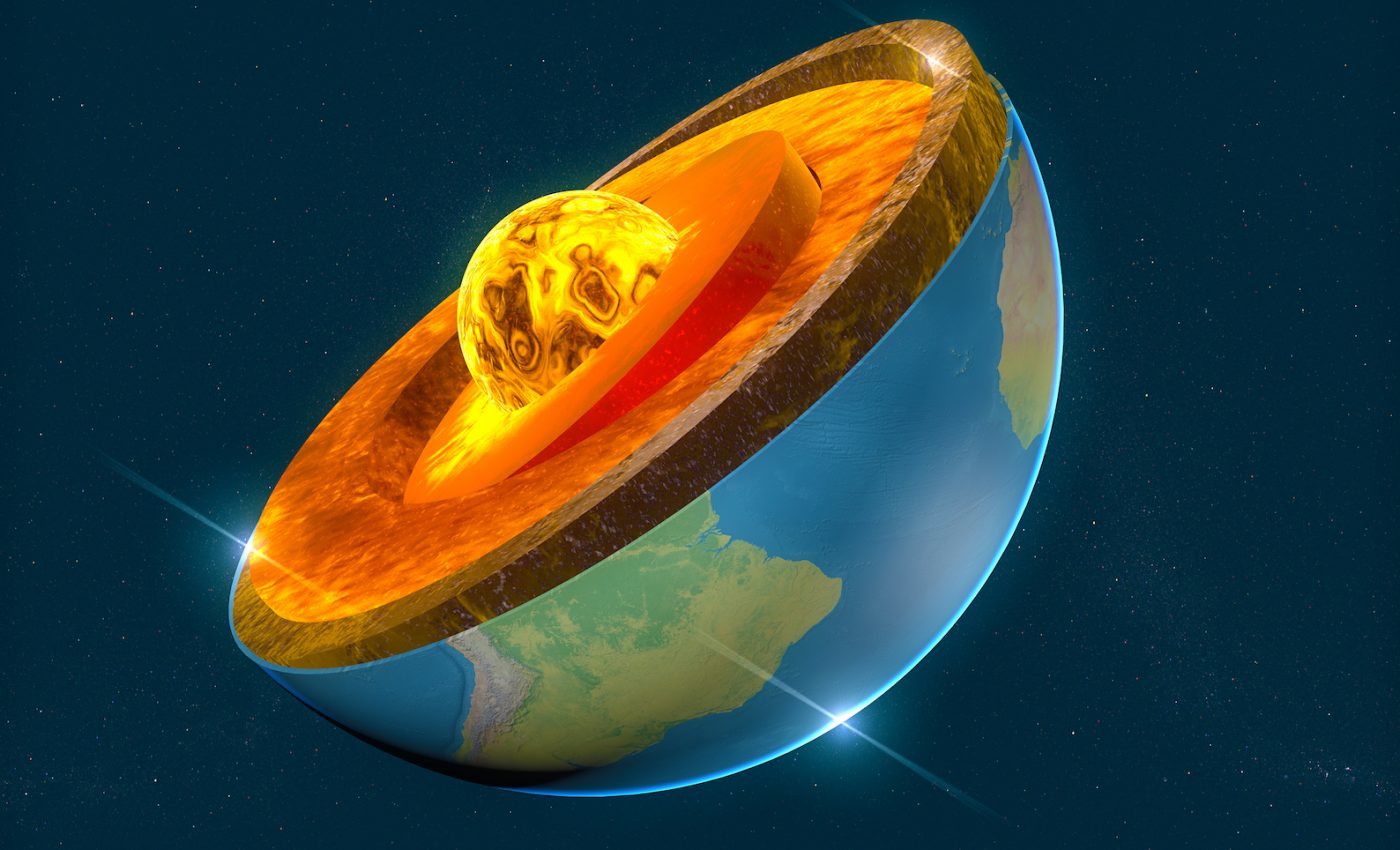
Hot rocks in the Earth’s interior moving faster than previously thought
A new study led by University College London has found that deep in the Earth’s interior, hot rock is flowing much more dynamically than what was previously realized. The flow of rock in the lower mantle was thought to move very slowly compared to that of the upper mantle, but researchers have found that this is not the case.
The discovery may ultimately help scientists understand the evolution of our planet and others in the solar system.
“We often picture the Earth’s mantle as a liquid that flows but it isn’t – it’s a solid that moves very slowly over time,” said study lead author Dr. Ana Ferreira. “Traditionally, it’s been thought that the flow of rock in Earth’s lower mantle is sluggish until you hit the planet’s core, with most dynamic action happening in the upper mantle which only goes to a depth of 660 km. We’ve shown this isn’t the case after all in large regions deep beneath the South Pacific Rim and South America.”
“Here, the same mechanism we see causing movement and deformation in the hot, pressurised rock in the upper mantle is also occurring in the lower mantle,” added Dr Manuele Faccenda. “If this increased activity is happening uniformly over the globe, Earth could be cooling more rapidly than we previously thought.”
The study provides evidence of dynamic movement in the Earth’s lower mantle where ancient ocean floors plunge toward the planet’s core, stretching from the upper mantle to the lower mantle up to 1,200 kilometers deep.
The investigation was focused on large data sets collected from seismic waves formed during earthquakes. The researchers used this data to analyze what takes place deep in the planet’s interior. This technique is comparable to how radiation is used in CAT scans to see what is happening inside the body.
“In a CAT scan, narrow beams of X-rays pass through the body to detectors opposite the source, building an image. Seismic waves pass through the Earth in much the same way and are detected by seismic stations on the opposite side of the planet to the earthquake epicentre, allowing us to build a picture of the structure of Earth’s interior,” explained Dr. Sung-Joon Chang.
By combining 43 million seismic data measurements with computer simulations, the researchers generated images to map how the mantle flows at depths of 1,200 kilometers below the surface. The images showed increased mantle flow beneath the Western Pacific and South America, where ancient ocean floors have shifted toward the Earth’s core over millions of years.
The researchers will also use this model to examine how material moves up from the Earth’s core to the surface, which will give scientists even more insight into how our planet evolved into its present state.
“How mantle flows on Earth might control why there is life on our planet but not on other planets, such as Venus, which has a similar size and location in the solar system to Earth, but likely has a very different style of mantle flow. We can understand a lot about other planets from revealing the secrets of our own,” concluded Dr Ferreira.
The study is published in the journal Nature Geoscience.
—
By Chrissy Sexton, Earth.com Staff Writer













